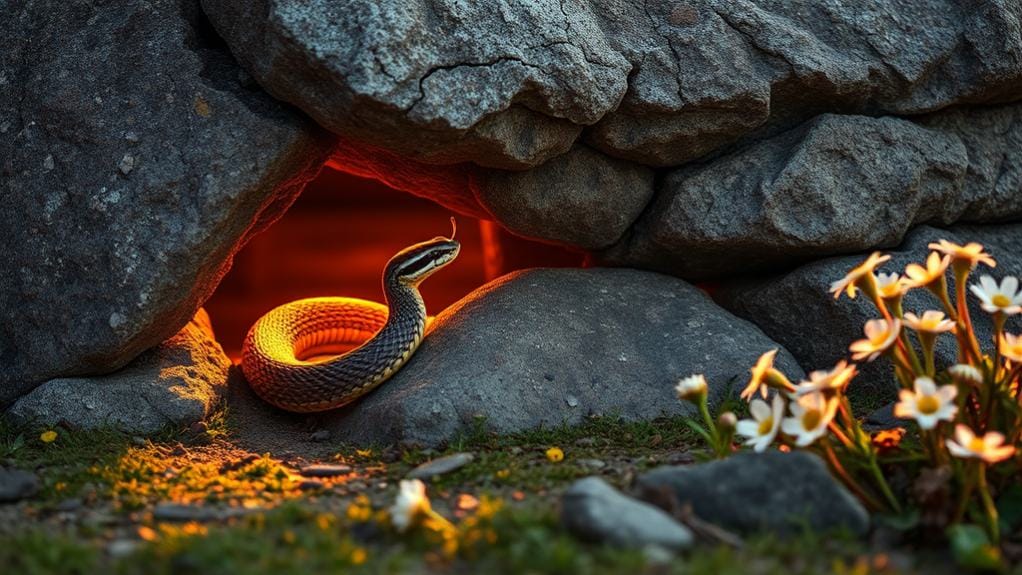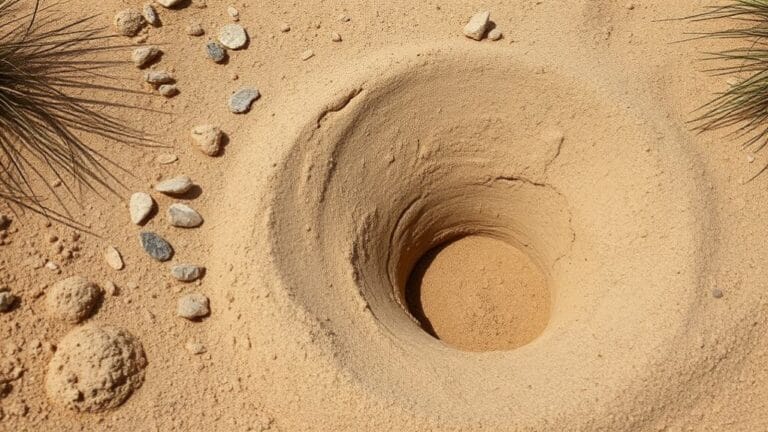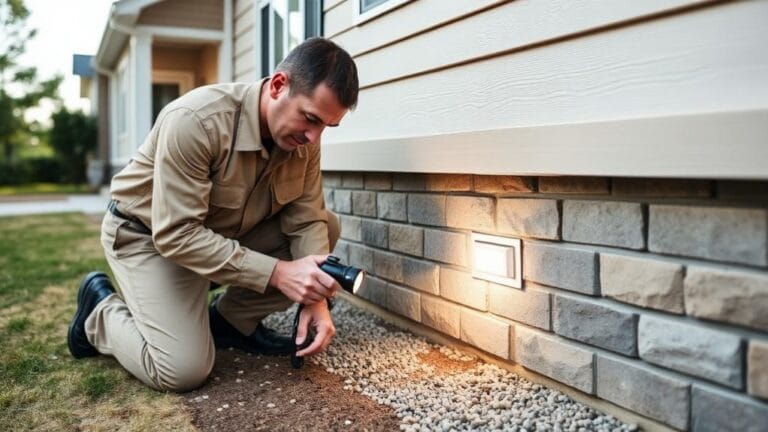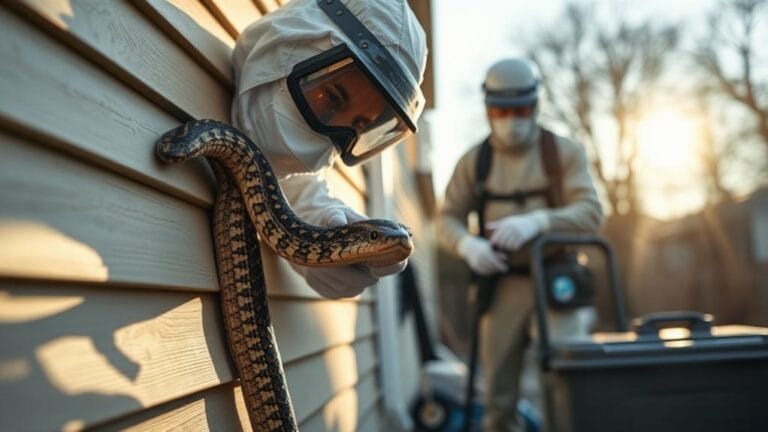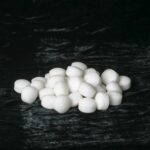Let me clear something up right away – snakes don't actually hibernate, they brumate. That's their version of a winter snooze where they can still wake up for snacks and water. You'll start seeing these slithery friends emerge from their winter hideouts when spring temperatures consistently hit above 50°F, usually in March or April. They'll begin with some lazy basking in sunny spots to warm up their cold-blooded bodies before getting active. Want to avoid a surprise snake encounter? Keep an eye on those first warm days – that's when they're most likely to be out catching rays. But there's more to staying snake-safe than just watching the thermometer.
Understanding Snake Brumation
Table of Contents
Misconceptions about snake hibernation are common among nature enthusiasts. Let me set things straight – snakes don't actually hibernate like your cozy bear friends. They go through something called brumation. Big difference!
During winter months, snakes will seek shelter in specific locations like caves, logs, and even basement areas to stay protected from harsh weather.
During brumation (September through March), these crafty reptiles don't completely check out. They're just taking an extended vacation in their winter dens. And guess what? They'll even emerge to grab food and water when temperatures warm up a bit. Talk about lazy meal prep!
Pro Tip: Don't assume snakes are safely tucked away all winter. They can become active during warm spells!
Unlike true hibernators, snakes will start to emerge in spring when things heat up. But here's the kicker – if spring's too cold or snowy, they'll hit that snooze button and stay in longer. Can't blame them, really!
When Snakes Wake Up
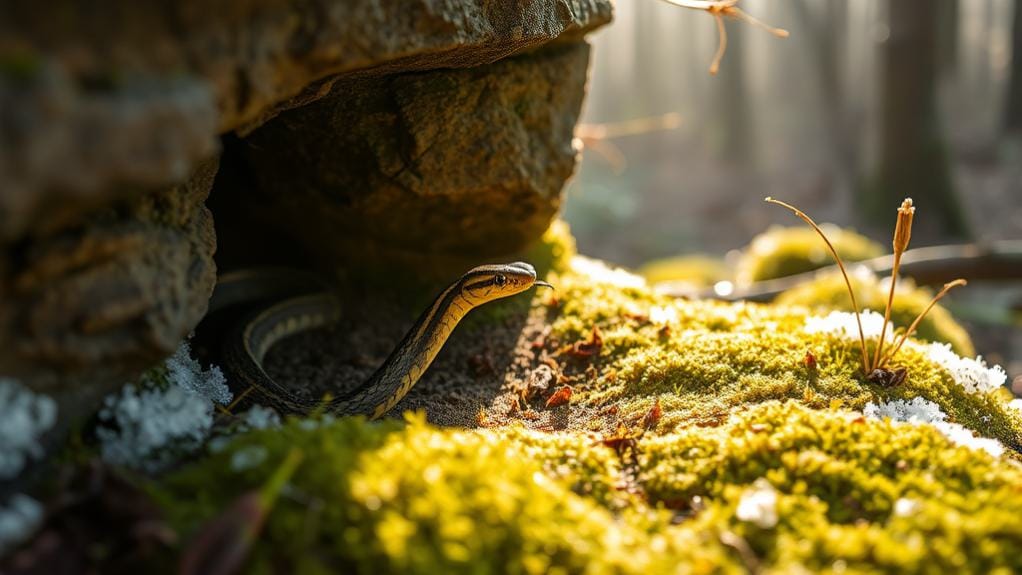
Just as our cold-blooded friends wrap up their winter rest, they've got a pretty specific wake-up routine. Snakes typically emerge from brumation when March or April rolls around – you know, when Mother Nature finally decides to turn up the thermostat.
As they emerge, many homeowners use natural snake deterrents like predators and repellents to keep them away from their properties.
Think they just pop out ready to party? Nope! These sleepy reptiles need time to regulate their body temperatures and get their act together. You'll spot them doing what I like to call the "spring snake shuffle" – basking in sunny spots to build up that precious body heat.
*Pro tip: If you're seeing snakes out on random warm winter days, don't panic. They're just taking a quick stretch break before heading back to their winter hideout.
The real wake-up call happens when spring temperatures stay consistently warm and their food source becomes active again.*
Signs of Snake Activity
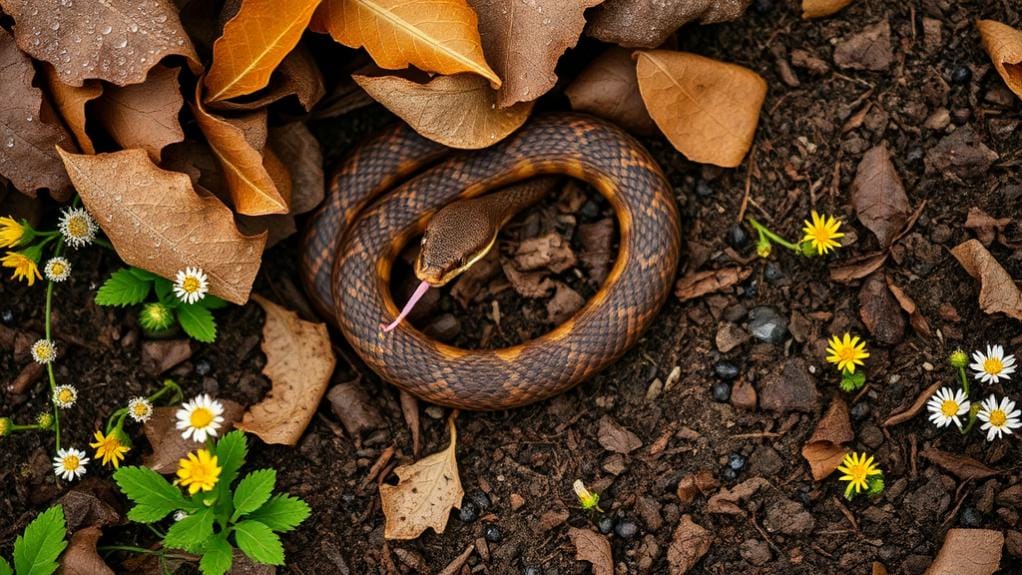
Nature leaves clear calling cards when snakes become active after their winter rest. I'll help you spot these cold-blooded creatures as they emerge from their winter hideouts. Trust me – they're not exactly subtle about it.
Watch for these key signs of snake activity:
- Shed skin (or "slough" if you want to sound fancy) in sunny spots
- More frequent sightings on those random warm winter days
- Increased activity in warm, sunny areas where they love basking
You may notice them seeking out warm water pipes and humid areas near plumbing as they wake from hibernation.
You'll notice most snake movement picks up when warmer weather hits consistently. They're pretty sluggish at first – wouldn't you be after sleeping all winter?
Look for them near dark, humid spots where they hunt, especially after sunbathing sessions.
*Pro tip: Keep an extra close eye out during late March when they're really starting to wake up.*
Seasonal Movement Patterns
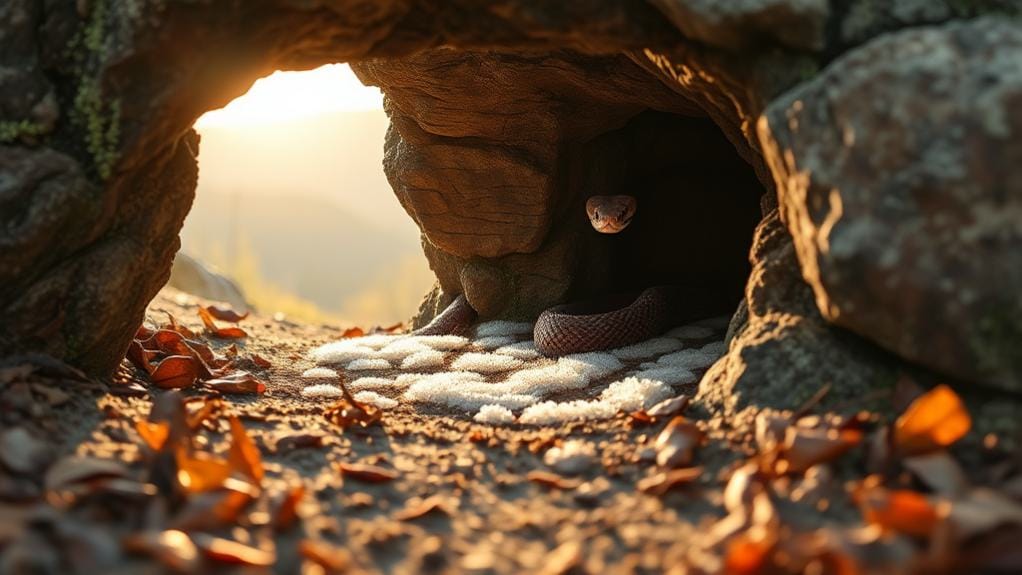
As spring temperatures climb above freezing, snakes follow predictable patterns when leaving their winter shelters. I'll tell you exactly how these scaly neighbors emerge from brumation – and yes, that's the fancy term for snake hibernation. You'll start seeing them on those first warm days, usually when it hits above 50°F.
| Season | Snake Activity | Temperature Range |
|---|---|---|
| Early Spring | Initial Basking | 50-65°F |
| Mid-Spring | Active Hunting | 65-75°F |
| Late Spring | Peak Activity | 75°F+ |
Pro Tip: You're most likely to spot snakes during mid-morning when they're warming up for the day's activities.
Here's the thing – they're not exactly morning people after their winter snooze. They'll be sluggish at first, which means you've got the perfect chance to spot them soaking up sun on rocks, logs, or even your driveway.
Preferred Snake Emergence Conditions
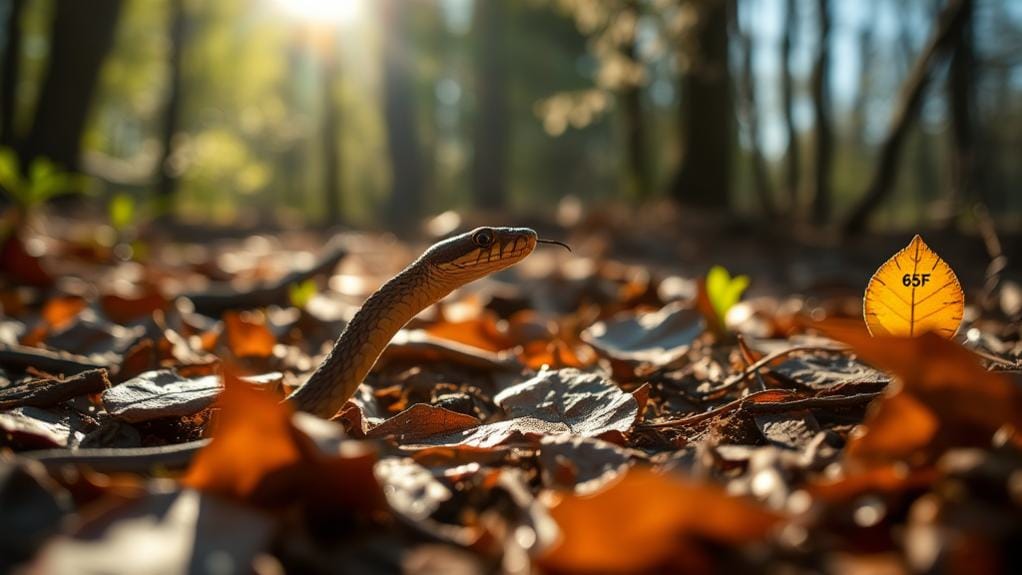
The perfect conditions for snake emergence combine several key factors that these cold-blooded creatures need to safely shift from winter brumation.
I'll tell you exactly what gets those scaly neighbors of yours moving again. When temperatures consistently stay above freezing, snakes emerge from their winter hideouts.
During this time, natural snake deterrents like cedar oil and cinnamon become more important as snake activity increases. You'll spot them first on warm surfaces during mild, sunny days – they're not stupid enough to come out in cold weather!
Think of them as nature's solar panels, soaking up that sweet sunshine.
Pro tip: Snakes remain active longest when daytime temperatures hit that sweet spot above 50°F.
Don't panic if you see a sluggish snake right after emergence. They're basically running on low battery and need to bask before they've got enough juice to hunt.
Trust me – they're not thrilled about the cold either!
Common Snake Hiding Places
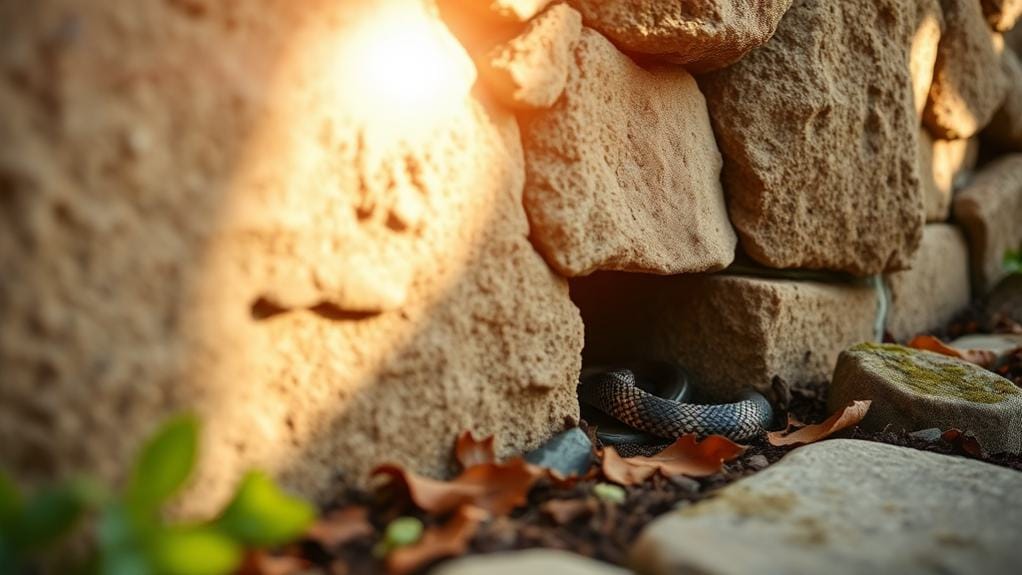
Snakes seek out three main types of hiding spots during their winter rest: underground burrows, natural caves, and spaces beneath rotting logs.
I'll bet you never considered that these reptiles might be closer to your home than you think during brumation. When temperatures drop, many snakes enter brumation state where their metabolism slows considerably, though some may still emerge on warmer days.
In urban settings, you'll find these scaly neighbors getting cozy in crawl spaces, garages, and sheds. They're not trying to crash at your place for fun – they're just looking for warmth.
And here's the kicker: they often bring friends! Snakes love to den together during cold months.
Pro Tip: Look for shed skin around your property. It's nature's way of saying "Guess who's been hanging out here?"
Want to identify pest risks? Check these common hiding places:
- Under stored boxes
- Behind garage clutter
- Inside basement cracks
Snake Prevention During Spring
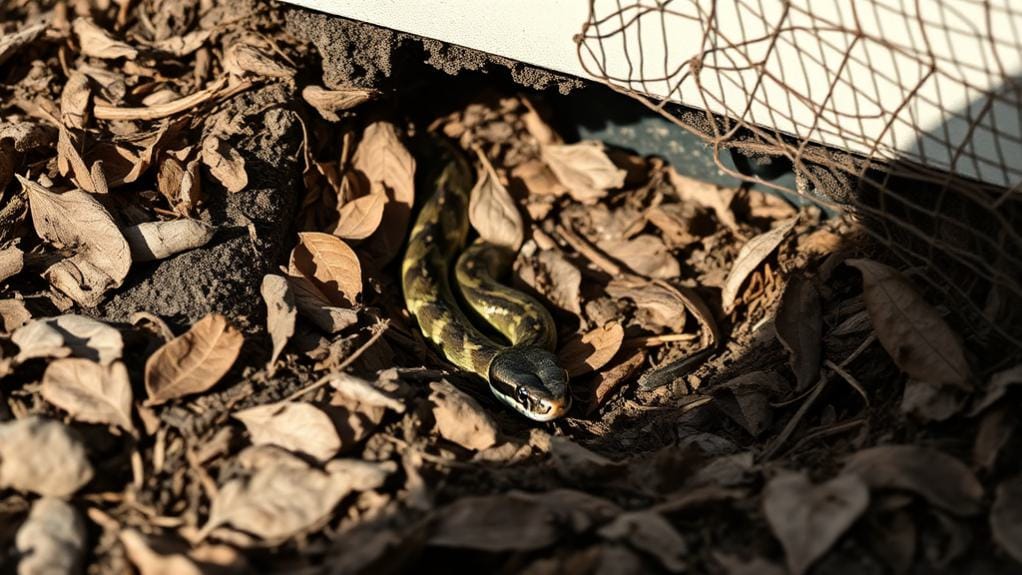
Spring signals prime time for snake prevention, right when these reptiles emerge from their winter rest.
Trust me – they're cold and sluggish, but they'll become less active only if you make your yard less appealing.
Want to keep snakes away? Here's what you need to do:
- Keep your yard well maintained – mow that grass and clear debris where snakes love to hide
- Seal those sneaky gaps near pipes and foundations
- Fix moisture issues that attract their favorite prey (yeah, those mice you've been ignoring)
Your awareness of local snake species matters more than you think.
Different snakes, different habits. Learn what's slithering in your area.
*Pro tip: Don't wait until you spot one to take action. By then, you're already playing catch-up with your scaly neighbors.*
Early Spring Behavior
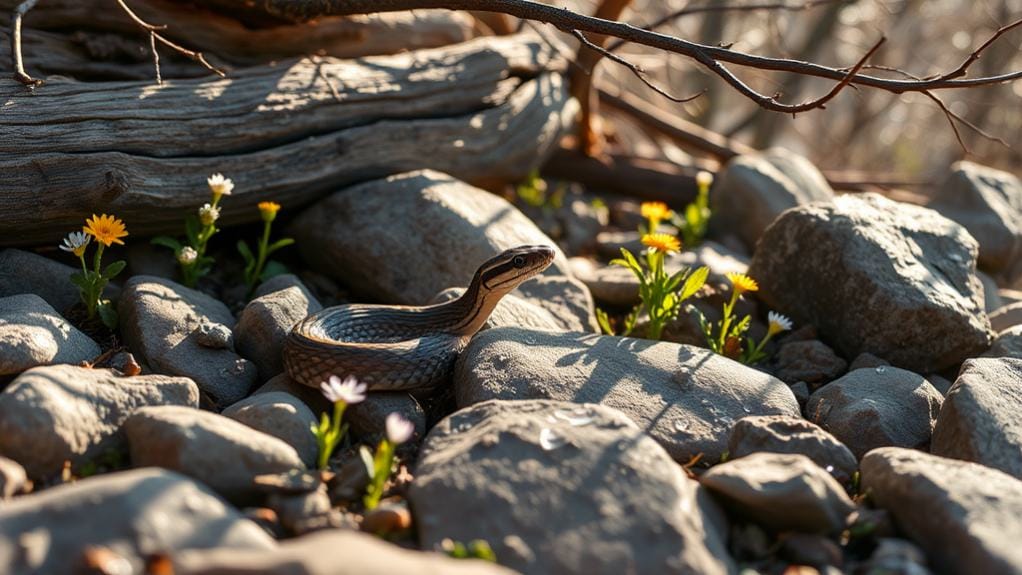
After enduring months of winter dormancy, these cold-blooded creatures begin stirring from their dens when temperatures consistently hover above freezing.
When snakes become active in early spring, they're not exactly ready to sprint – they're more like groggy teenagers who can't find their phone.
- You'll spot them basking in sunny spots, trying to warm their cold bodies (yeah, they're basically living solar panels)
- They'll emerge gradually, testing the weather before fully committing to spring
- Their movements are sluggish at first – perfect time for you to spot and avoid them
- They'll stick close to their brumation dens while getting their bearings
- Once warmed up, they'll forage for food in dark, damp areas near their basking spots
*Pro tip: Those first warm spring days are prime snake-spotting time. Keep your eyes peeled!*
Snake Safety Tips
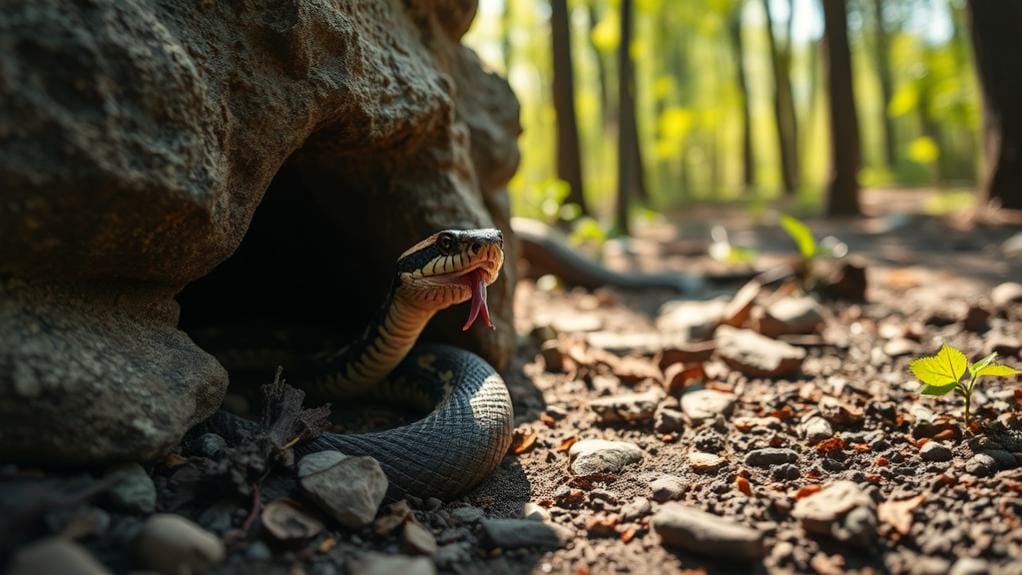
Staying safe during snake season doesn't require paranoia – just smart awareness and common sense. As snakes emerge from brumation, I want you to focus on prevention rather than panic.
Here's what you need to do:
- Learn to identify venomous snakes in your area (because really, who wants a surprise encounter?)
- Keep your yard clear of debris – snakes love clutter almost as much as your teenager does.
- Seal gaps around your home's foundation and utilities.
- Create a snake-resistant environment by removing their favorite hangouts.
Pro Tip: If you spot a snake, back away slowly. No need for heroics – they're usually more scared of you than you're of them.
Remember: Most snakes aren't out to get you. They're just trying to warm up and find breakfast, just like the rest of us on a chilly spring morning.
Frequently Asked Questions
At What Temperature Do Snakes Come Out of Hibernation?
I'll tell you that snakes typically emerge when daytime temperatures reach around 60°F (15°C). They'll start becoming active once it's consistently above freezing, though some may briefly bask on warmer winter days.
What Time of Year Are Snakes Most Active?
I'll tell you that snakes are most active during warm months, from March through October. You'll find them hunting and mating during this period, though they'll often switch to nighttime activity in summer's peak heat.
What Is the Best Time of Day to Avoid Snakes?
Want to dodge those slithering encounters? I'll tell you this: you're safest from snakes in early morning and late evening hours when temperatures are cooler. They're least active then, especially during warmer months.
At What Temperature Do Copperhead Snakes Become Inactive?
I'll tell you that copperhead snakes become inactive when temperatures drop below 60°F (15°C). They'll seek sheltered spots and enter brumation, which is their dormant state for conserving energy during cold weather.
Last Word
Let me tell you – knowing when snakes emerge is essential for your safety. Studies show that 85% of snake encounters happen within the first 6 weeks of spring emergence. I've seen too many people get careless once temperatures hit 60°F. That's exactly when snakes start moving. You'll need to stay alert, watch where you step, and keep your yard clear. Don't be that person who learns about snake season the hard way.

